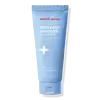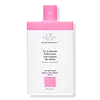What's inside
What's inside
 Key Ingredients
Key Ingredients

 Benefits
Benefits

 Concerns
Concerns

 Ingredients Side-by-side
Ingredients Side-by-side

Water
Skin ConditioningCetyl Ethylhexanoate
EmollientHydrogenated Polydecene
EmollientButylene Glycol
HumectantPolyglyceryl-3 Methylglucose Distearate
Emulsifying1,2-Hexanediol
Skin ConditioningNiacinamide
SmoothingCetearyl Alcohol
EmollientCoco-Caprylate/Caprate
EmollientSalicylic Acid
MaskingChamaecyparis Obtusa Water
MaskingGlyceryl Glucoside
HumectantSaccharomyces/Rice Ferment Filtrate
Skin ConditioningFructan
Skin ConditioningAloe Barbadensis Leaf Extract
EmollientCucumis Sativus Fruit Extract
EmollientGlycerin
HumectantHamamelis Virginiana Leaf Extract
Skin ConditioningPapain
Skin ConditioningGlycolic Acid
BufferingMalpighia Glabra Fruit Extract
Skin ConditioningPerilla Ocymoides Seed Extract
AntioxidantSalvia Hispanica Seed Extract
EmollientPrunella Vulgaris Extract
AntioxidantFucus Vesiculosus Extract
EmollientGlucose
HumectantBeta-Glucan
Skin ConditioningBetaine
HumectantAllantoin
Skin ConditioningCaesalpinia Spinosa Gum
Skin ConditioningSorbitan Olivate
EmulsifyingPotassium Hydroxide
BufferingUlmus Davidiana Root Extract
Skin ConditioningCetearyl Olivate
Polyglyceryl-4 Caprate
EmulsifyingGlyceryl Stearate Se
EmulsifyingPolyacrylate Crosspolymer-6
Emulsion StabilisingCaprylyl Glycol
EmollientWater, Cetyl Ethylhexanoate, Hydrogenated Polydecene, Butylene Glycol, Polyglyceryl-3 Methylglucose Distearate, 1,2-Hexanediol, Niacinamide, Cetearyl Alcohol, Coco-Caprylate/Caprate, Salicylic Acid, Chamaecyparis Obtusa Water, Glyceryl Glucoside, Saccharomyces/Rice Ferment Filtrate, Fructan, Aloe Barbadensis Leaf Extract, Cucumis Sativus Fruit Extract, Glycerin, Hamamelis Virginiana Leaf Extract, Papain, Glycolic Acid, Malpighia Glabra Fruit Extract, Perilla Ocymoides Seed Extract, Salvia Hispanica Seed Extract, Prunella Vulgaris Extract, Fucus Vesiculosus Extract, Glucose, Beta-Glucan, Betaine, Allantoin, Caesalpinia Spinosa Gum, Sorbitan Olivate, Potassium Hydroxide, Ulmus Davidiana Root Extract, Cetearyl Olivate, Polyglyceryl-4 Caprate, Glyceryl Stearate Se, Polyacrylate Crosspolymer-6, Caprylyl Glycol
Water
Skin ConditioningGlycolic Acid
BufferingCoconut Alkanes
EmollientSodium Hydroxide
BufferingHydroxyethyl Acrylate/Sodium Acryloyldimethyl Taurate Copolymer
Emulsion StabilisingPropanediol
SolventCetearyl Alcohol
EmollientSqualane
EmollientCetearyl Olivate
Sorbitan Olivate
EmulsifyingSclerocarya Birrea Seed Butter
EmollientButyrospermum Parkii Butter
Skin ConditioningCamellia Sinensis Seed Oil
HumectantPassiflora Edulis Seed Oil
EmollientNiacinamide
SmoothingSodium PCA
HumectantLactic Acid
BufferingTartaric Acid
BufferingSclerocarya Birrea Seed Oil
HumectantCocos Nucifera Fruit Juice
EmollientAdansonia Digitata Seed Oil
EmollientSchinziophyton Rautanenii Kernel Oil
EmollientCoco-Caprylate/Caprate
EmollientCitrullus Lanatus Seed Oil
EmollientCocos Nucifera Oil
MaskingTapioca Starch
Vitis Vinifera Juice Extract
AntioxidantPrunus Armeniaca Kernel Oil
MaskingSimmondsia Chinensis Seed Oil
EmollientXimenia Americana Seed Oil
EmollientSodium Hyaluronate Crosspolymer
HumectantAllantoin
Skin ConditioningQuercetin
AntioxidantLinoleic Acid
CleansingLinolenic Acid
CleansingPrunus Amygdalus Dulcis Oil
Skin ConditioningPersea Gratissima Oil
Skin ConditioningTocopherol
AntioxidantCitric Acid
BufferingSorbitan Isostearate
EmulsifyingPolysorbate 60
EmulsifyingChlorphenesin
AntimicrobialPhenoxyethanol
PreservativeCaprylyl Glycol
EmollientPotassium Sorbate
PreservativePentylene Glycol
Skin ConditioningSodium Carbonate
BufferingSodium Chloride
MaskingEthylhexylglycerin
Skin ConditioningWater, Glycolic Acid, Coconut Alkanes, Sodium Hydroxide, Hydroxyethyl Acrylate/Sodium Acryloyldimethyl Taurate Copolymer, Propanediol, Cetearyl Alcohol, Squalane, Cetearyl Olivate, Sorbitan Olivate, Sclerocarya Birrea Seed Butter, Butyrospermum Parkii Butter, Camellia Sinensis Seed Oil, Passiflora Edulis Seed Oil, Niacinamide, Sodium PCA, Lactic Acid, Tartaric Acid, Sclerocarya Birrea Seed Oil, Cocos Nucifera Fruit Juice, Adansonia Digitata Seed Oil, Schinziophyton Rautanenii Kernel Oil, Coco-Caprylate/Caprate, Citrullus Lanatus Seed Oil, Cocos Nucifera Oil, Tapioca Starch, Vitis Vinifera Juice Extract, Prunus Armeniaca Kernel Oil, Simmondsia Chinensis Seed Oil, Ximenia Americana Seed Oil, Sodium Hyaluronate Crosspolymer, Allantoin, Quercetin, Linoleic Acid, Linolenic Acid, Prunus Amygdalus Dulcis Oil, Persea Gratissima Oil, Tocopherol, Citric Acid, Sorbitan Isostearate, Polysorbate 60, Chlorphenesin, Phenoxyethanol, Caprylyl Glycol, Potassium Sorbate, Pentylene Glycol, Sodium Carbonate, Sodium Chloride, Ethylhexylglycerin
 Reviews
Reviews

Ingredients Explained
These ingredients are found in both products.
Ingredients higher up in an ingredient list are typically present in a larger amount.
Allantoin is a soothing ingredient known for its protective and moisturizingg properties. Because of this, it is often added to products with strong active ingredients.
Studies show higher concentrations of this ingredient can promote wound healing.
Though it can be derived from the comfrey plant, allantoin is produced synthetically for cosmetic products to ensure purity.
Learn more about AllantoinCaprylyl Glycol is a humectant and emollient, meaning it attracts and preserves moisture.
It is a common ingredient in many products, especially those designed to hydrate skin. The primary benefits are retaining moisture, skin softening, and promoting a healthy skin barrier.
Though Caprylyl Glycol is an alcohol derived from fatty acids, it is not the kind that can dry out skin.
This ingredient is also used as a preservative to extend the life of products. It has slight antimicrobial properties.
Learn more about Caprylyl GlycolCetearyl alcohol is a mixture of two fatty alcohols: cetyl alcohol and stearyl alcohol. It is mainly used as an emulsifier. Emulsifiers help prevent the separation of oils and products. Due to its composition, it can also be used to thicken a product or help create foam.
Cetearyl alcohol is an emollient. Emollients help soothe and hydrate the skin by trapping moisture.
Studies show Cetearyl alcohol is non-toxic and non-irritating. The FDA allows products labeled "alcohol-free" to have fatty alcohols.
This ingredient is usually derived from plant oils such as palm, vegetable, or coconut oils. There is debate on whether this ingredient will cause acne.
Due to the fatty acid base, this ingredient may not be Malassezia folliculitis safe.
Learn more about Cetearyl AlcoholCetearyl Olivate is an emulsifier and texture enhancer. It is derived from the fatty acids of olive oil and Cetearyl alcohol, and is biodegradable.
As an emulsifier, it is used to prevent oils and waters from separating. It can also
Manufacturers use the name Olivem 1000. This ingredient has been found to preserve the natural microbiome of skin. Having a healthy microbiome helps keep our skin healthy and protects against harmful bacteria. This ingredient is grouped with Sorbitan Olivate under the name Olivem 1000.
Learn more about Cetearyl OlivateCoco-Caprylate/Caprate is created from fatty coconut alcohol, caprylic acid, and capric acid.
It is a lightweight emollient. Emollients create a thin barrier on the skin to trap moisture in. This helps keep your skin hydrated and soft.
Once applied, Coco-Caprylate/Caprate is absorbed quickly and leaves a silky feel.
Coco-Caprylate/Caprate may not be fungal acne safe.
Learn more about Coco-Caprylate/CaprateGlycolic Acid is arguably the most famous alpha hydroxy acid (AHA) with tons of research backing its benefits.
It is found naturally in sugar cane but the form used in skincare is usually synthetic for purity and stability.
Glycolic acid removes the top layer of dead skin cells to allow newer and fresher ones to emerge.
AHAs work by breaking down the structural “glue” that holds old skin cells in place. When that buildup is gone, your skin can renew itself more efficiently.
Research also shows glycolic acid stimulates collagen production, helping to firm and thicken the skin over time. This is one of its biggest advantages over other AHAs.
Overall, glycolic acid helps with:
Fun fact: Glycolic acid boosts skin hydration by helping it produce molecules that increase hyaluronic acid naturally.
To work best, glycolic acid products should have a pH between 3-4 (that’s where exfoliation is most effective but still gentle on skin).
The pH and concentration of a product are key to its effectiveness:
It is normal to feel a slight stinging sensation when using glycolic acid. This usually fades as your skin adjusts.
Because glycolic acid has the smallest molecular size in the AHA family, it can penetrate deeper, which enhances its effectiveness but also makes it more likely to irritate sensitive skin.
If your skin is very sensitive or prone to rosacea, glycolic acid may be too strong; in that case, try milder options like lactic acid or a PHA instead.
Recent studies suggest glycolic acid might even help protect against UV damage. But don’t skip sunscreen! Freshly exfoliated skin is more sensitive to the sun.
Glycolic acid is a skincare superstar. It smooths, brightens, hydrates, and firms the skin. Unless you’re highly sensitive, it’s well worth adding to your routine.
Read more about some other popular AHA's here:
Learn more about Glycolic AcidNiacinamide is a multitasking form of vitamin B3 that strengthens the skin barrier, reduces pores and dark spots, regulates oil, and improves signs of aging.
And the best part? It's gentle and well-tolerated by most skin types, including sensitive and reactive skin.
You might have heard of "niacin flush", or the reddening of skin that causes itchiness. Niacinamide has not been found to cause this.
In very rare cases, some individuals may not be able to tolerate niacinamide at all or experience an allergic reaction to it.
If you are experiencing flaking, irritation, and dryness with this ingredient, be sure to double check all your products as this ingredient can be found in all categories of skincare.
When incorporating niacinamide into your routine, look out for concentration amounts. Typically, 5% niacinamide provides benefits such as fading dark spots. However, if you have sensitive skin, it is better to begin with a smaller concentration.
When you apply niacinamide to your skin, your body converts it into nicotinamide adenine dinucleotide (NAD). NAD is an essential coenzyme that is already found in your cells as "fuel" and powers countless biological processes.
In your skin, NAD helps repair cell damage, produce new healthy cells, support collagen production, strengthen the skin barrier, and fight environmental stressors (like UV and pollution).
Our natural NAD levels start to decline with age, leading to slower skin repair, visible aging, and a weaker skin barrier. By providing your skin niacinamide, you're recharging your skin's NAD levels. This leads to stronger, healthier, and younger looking skin.
Another name for vitamin B3 is nicotinamide. This vitamin is water-soluble and our bodies don't store it. We obtain Vitamin B3 from either food or skincare. Meat, fish, wheat, yeast, and leafy greens contain vitamin B3.
The type of niacinamide used in skincare is synthetically created.
Learn more about NiacinamideSorbitan Olivate is created from the fatty acids in olive oil and sorbitol.
This ingredient is an oil in water emulsifier. It helps stabilize a product by preventing oils and waters from separating. Sorbitan Olivate also helps hydrate the skin.
Manufacturers sell sorbitan olivate under the name OliveM 1000. OliveM 1000 a multifunctional ingredient. It is self-emulsifying. According to a manufacturer, OliveM 1000 does not disrupt natural skin biome.
Due to its olive oil base, this ingredient may not be fungal-acne safe.
Learn more about Sorbitan OlivateWater. It's the most common cosmetic ingredient of all. You'll usually see it at the top of ingredient lists, meaning that it makes up the largest part of the product.
So why is it so popular? Water most often acts as a solvent - this means that it helps dissolve other ingredients into the formulation.
You'll also recognize water as that liquid we all need to stay alive. If you see this, drink a glass of water. Stay hydrated!
Learn more about Water